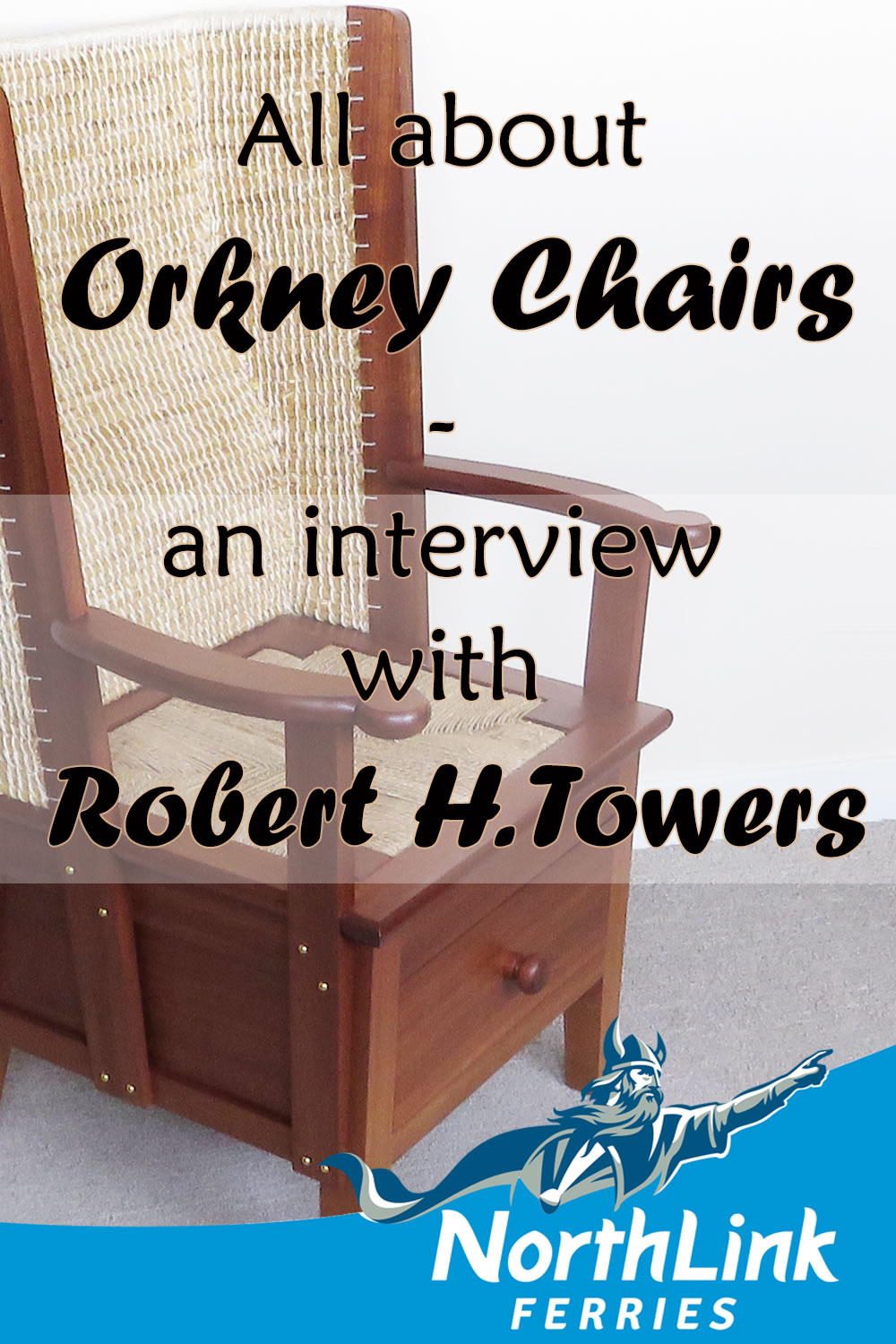All about Orkney Chairs – an interview with Robert H. Towers
An Orkney Chair is unique part of the rich heritage of the Orkney Islands. They are wooden, handcrafted and have a straw back. We approached master craftsman Robert H. Towers, who has been making Orkney Chairs for over 38 years, to ask him some questions about the history and process of making them.
“I founded my chair-making business in the parish of St Ola in 1977. I would have been 33 or 34 when I started. Making those first Orkney Chairs was trial and error, I’d always worked at woodwork as a hobby and made things for fun at every possible opportunity I had.”
Make sure you visit his website at http://www.orkney-chair.co.uk/ to find out more!
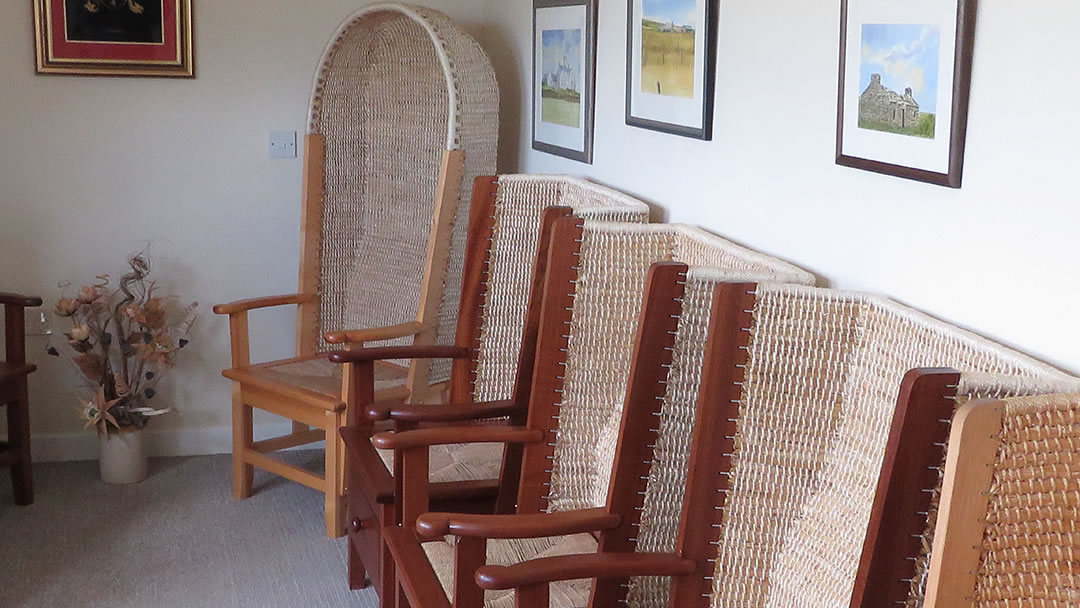
Q. Can you tell us a bit about the history of Orkney Chairs?
A. Orkney Chairs at first were nothing more than a low round stool covered with straw. Orkney is void of timber, so straw was a good agricultural by-product to use. The design then developed into a low chair with a straw back some two feet in height. The hood was added, possibly to shelter the occupant from draughts. At this stage the seat remained round and the covering of straw went down to the floor.
Later on, a native of the North Isles made the first chair with a wooden seat. This chair was also different in that it was square and that there was no covering of straw on the chair base. Around this period the drawer would have also been added. This is what we know of as the Orkney Chair today.
There was this myth about driftwood being a source of wood for chairs but that just didn’t happen – have you ever seen a bit of driftwood that would make anything?
If you look at the old chairs, no two were exactly the same shape or size. It was governed by the materials the maker had available. Wood came from different places, from old furniture or old steadings. I’ve repaired old chairs with four different kinds of wood in it and covered with a coat of black varnish! You would have a slew of different sizes; if a chair-maker had a long piece of wood, he would cut it in half to make the uprights. He didn’t say, “These must be exactly three foot each.” He would just cut it and it was maybe higher than the one he made last winter!
Around 1890 some folk started making Orkney Chairs on a commercial basis, as a side-line along with joinery or undertaking. They only made the chair frame, and left the backs to be made by others. Most chairs however were just ‘one off’ and varied in both shape and size.
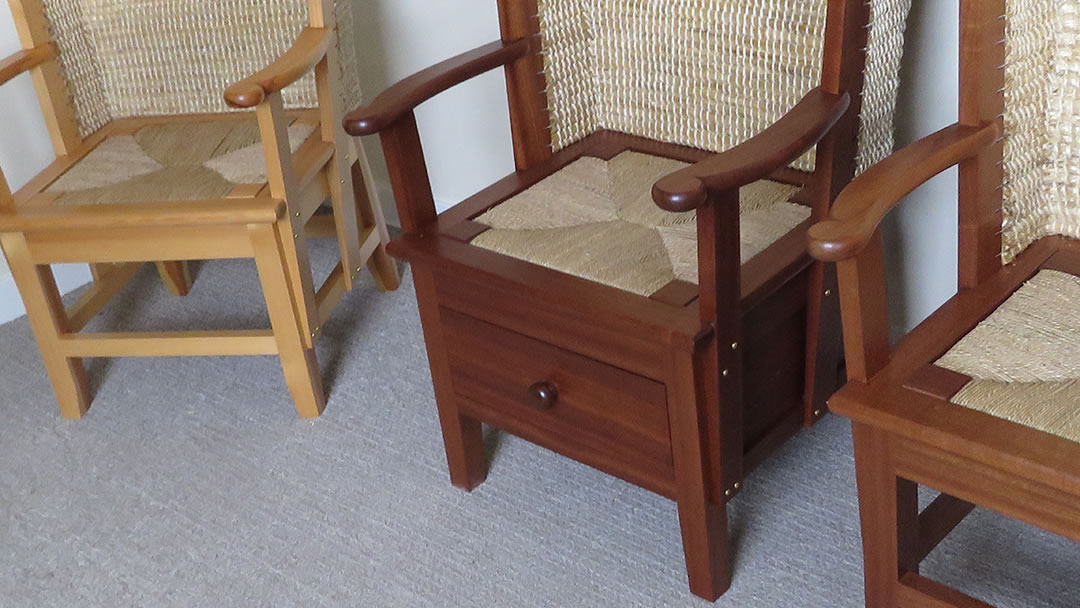
Q. What was the drawer in an Orkney Chair traditionally used for?
A. In the very old chairs there are more chairs with hoods than there are chairs with drawers. Possibly they may not have had the necessary skills to fit a drawer. Maybe they just didn’t want to! I’m not sure what was kept in the drawer – I’ve heard of everything from knitting to fishing hooks, a half bottle to the bible!
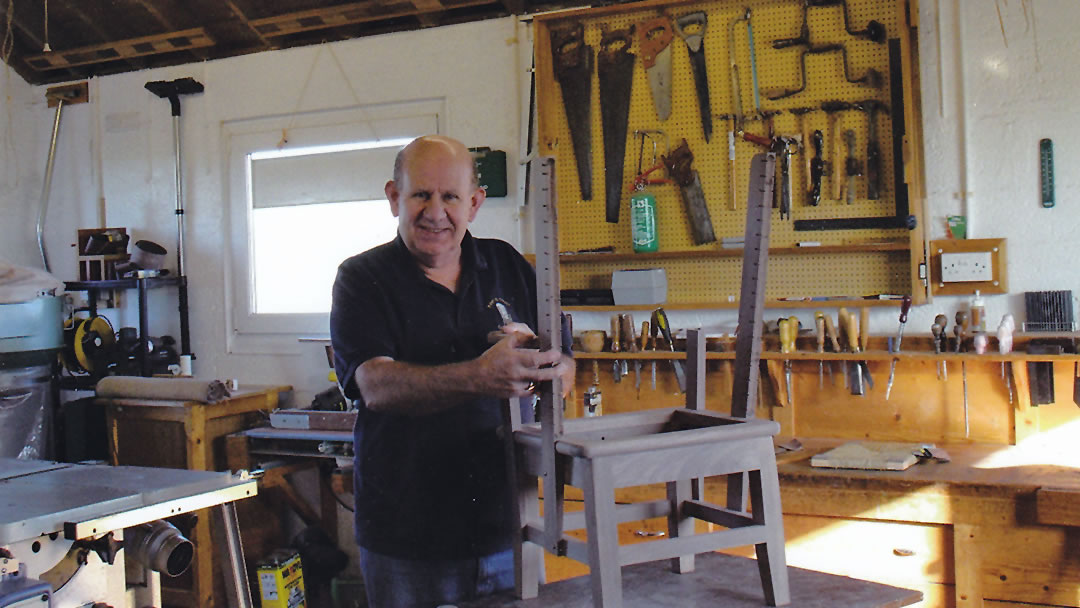
Q. When did you start making Orkney Chairs yourself?
A. I founded my chair-making business in the parish of St Ola in 1977. I would have been 33 or 34 when I started.
I enjoyed woodwork for many years beforehand, but on leaving school I went into the catering industry, working with the Cunard Line. I was a waiter on board the liner ‘Queen Mary’, working at the captain’s table for most of 1960. I then worked for some eleven years in the management of a hotel in Kirkwall.
It was one Saturday afternoon, while cleaning my car, that some friends stopped by and asked me, “have you ever thought of making an Orkney Chair?” As they say, the rest is history!
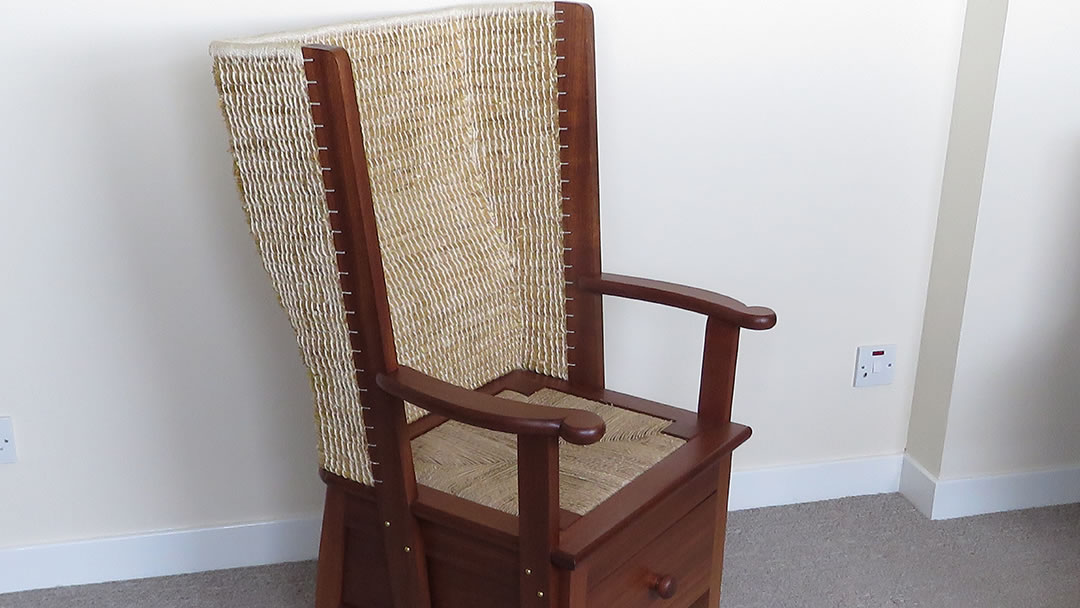
Q. Did you have any friends or relatives who made Orkney Chairs, someone who guided your hand?
A. No, making those first Orkney Chairs was trial and error, I’d always worked at woodwork as a hobby and made things for fun at every possible opportunity I had. It just seemed like the thing to do – it beats working for a living!
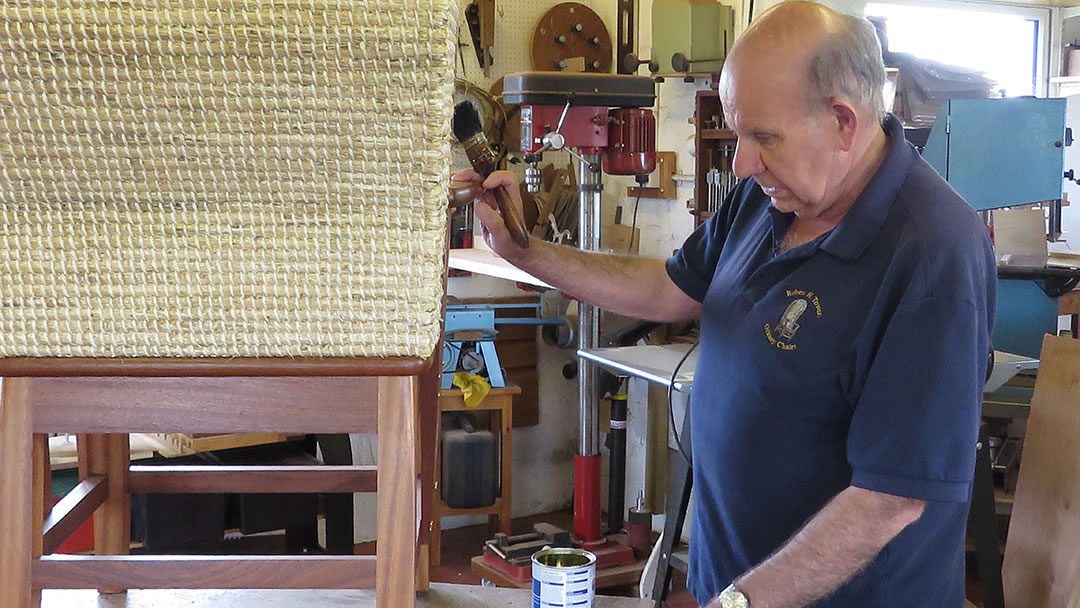
Q. What wood do you use to make chairs with?
A. It’s usually sapele wood these days. Pine was very fashionable is all types of furniture, but is less popular these past 10 or 12 years. Mostly we work with sapele wood which is not too difficult to work with. It’s also popular with the customers which is important; it’s no use if they don’t like it!
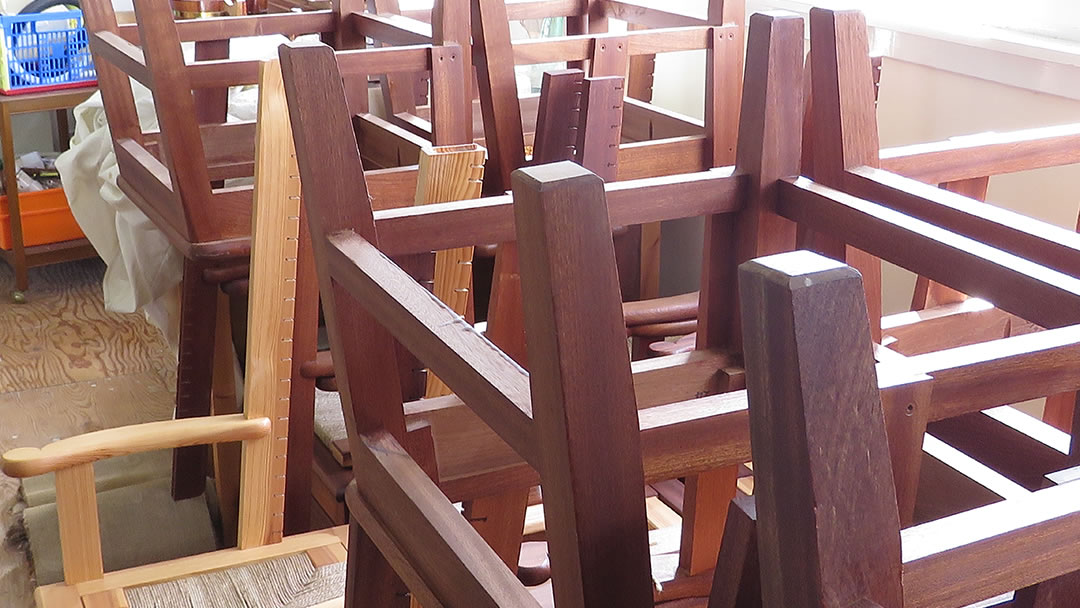
Q. Where do you source the straw used for the back of the chair?
A. I have two or three farmers I work between. I have a cousin who farms in one of the isles and I’ve had some from him. I’ve had some from Braelanders over the years over in Deerness, a couple of guys in Holm. Since 1950 there’s been a big drop in straw being produced, but I’ve never encountered any problems sourcing the straw – you’re not needing a great deal for an Orkney Chair.
I like the straw to be long and thick, I use Air Bounty to back a chair. Sometime you hear about Orkney Chairs made with straw from black oats. However black oats are very thin and quite short so you’re going to increase your time cleaning it and it doesn’t tighten well.
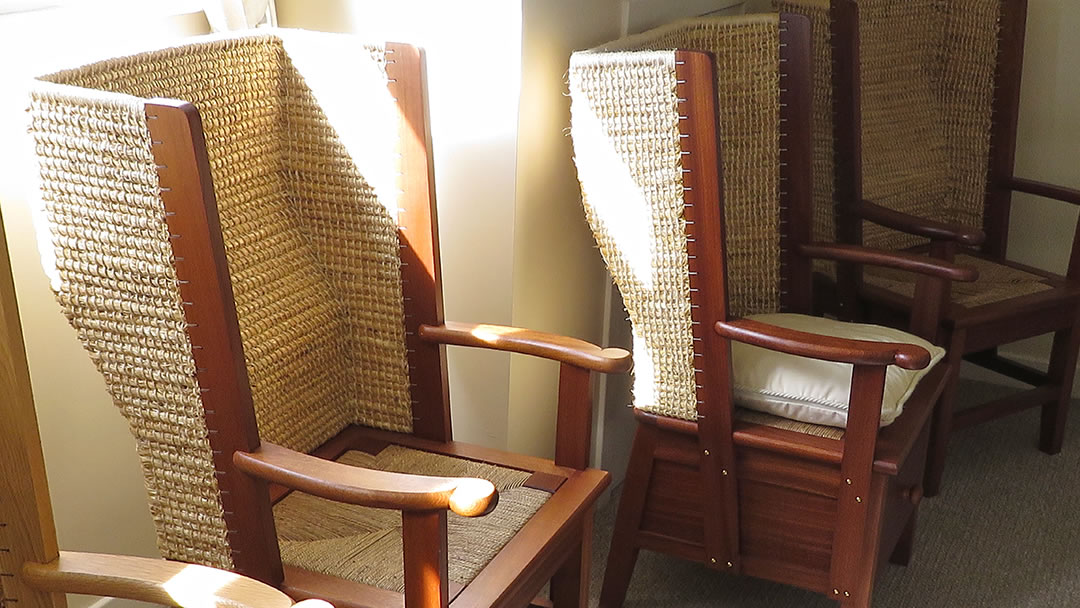
Q. So you have to clean the straw?
A. Oh yes, by hand! It’s the laborious part of the job, but if Presley’s playing in the background it’s not so bad!
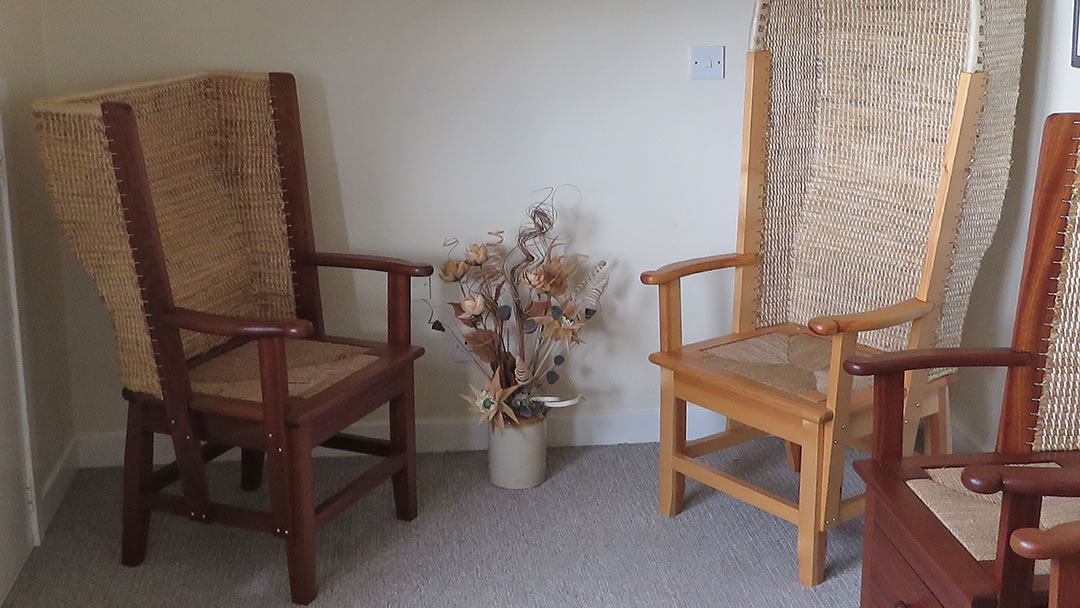
Q. Where’s the furthest you’ve sent an Orkney Chair?
A. All over the world is probably the safest answer! There’s never been any problem with deliveries.
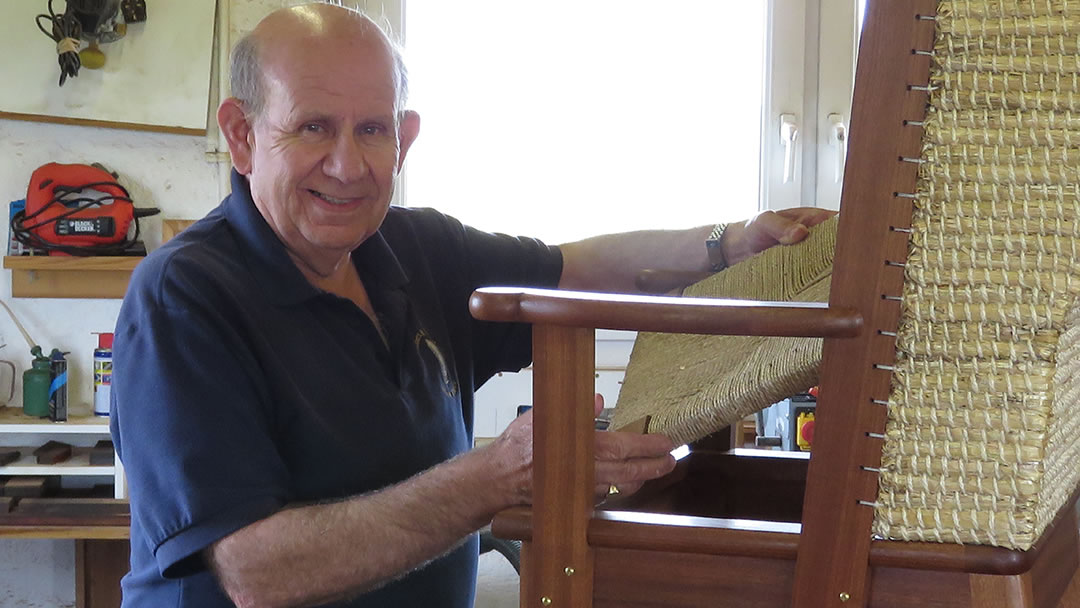
Q. Is it a satisfying job, and do you receive feedback from customers?
A. Yes, I find it satisfying because I like working with wood! It may not necessarily have been Orkney Chairs but they presented themselves and I have had a good working life out of it!
It could have been another wooden item in demand and I would have done that and it still would have been fine. I do woodwork for fun as well as work so there must be some satisfaction in it, and I’ve always had good feedback from customers too!
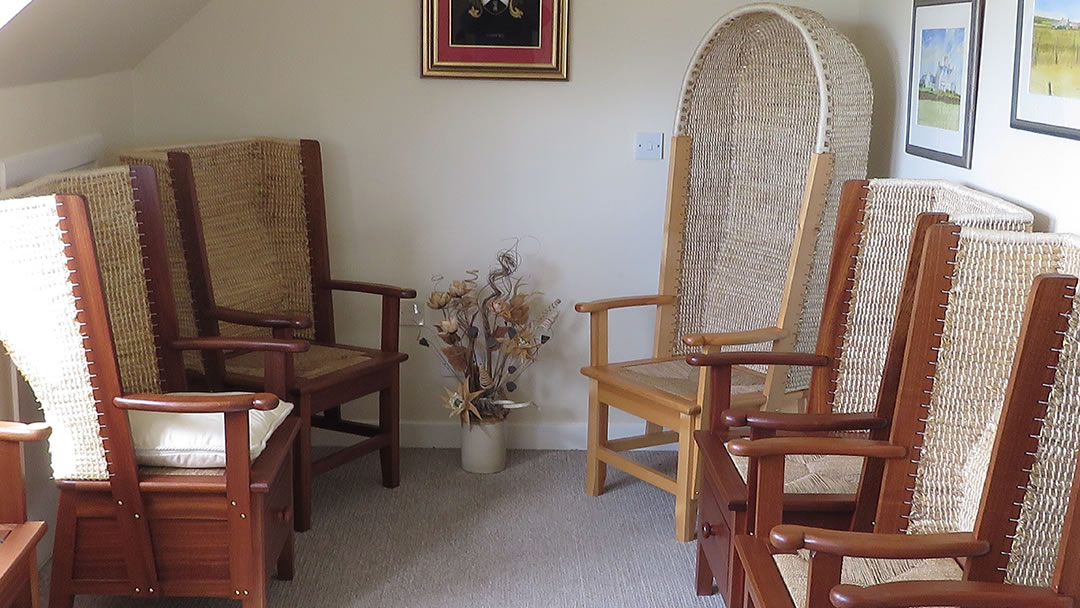
Q. What would you say to someone considering buying an Orkney Chair?
A. Buy two!
Robert would like to welcome visitors to Orkney to stop by his workshop. Appointments can be made in advance by contacting Robert H. Towers on 01856 873521 or for more information please visit www.orkney-chair.co.uk
 By Magnus Dixon
By Magnus DixonOrkney and Shetland enthusiast, family man, loves walks, likes animals, terrible at sports, dire taste in music, adores audiobooks and films, eats a little too much for his own good.
Pin it!